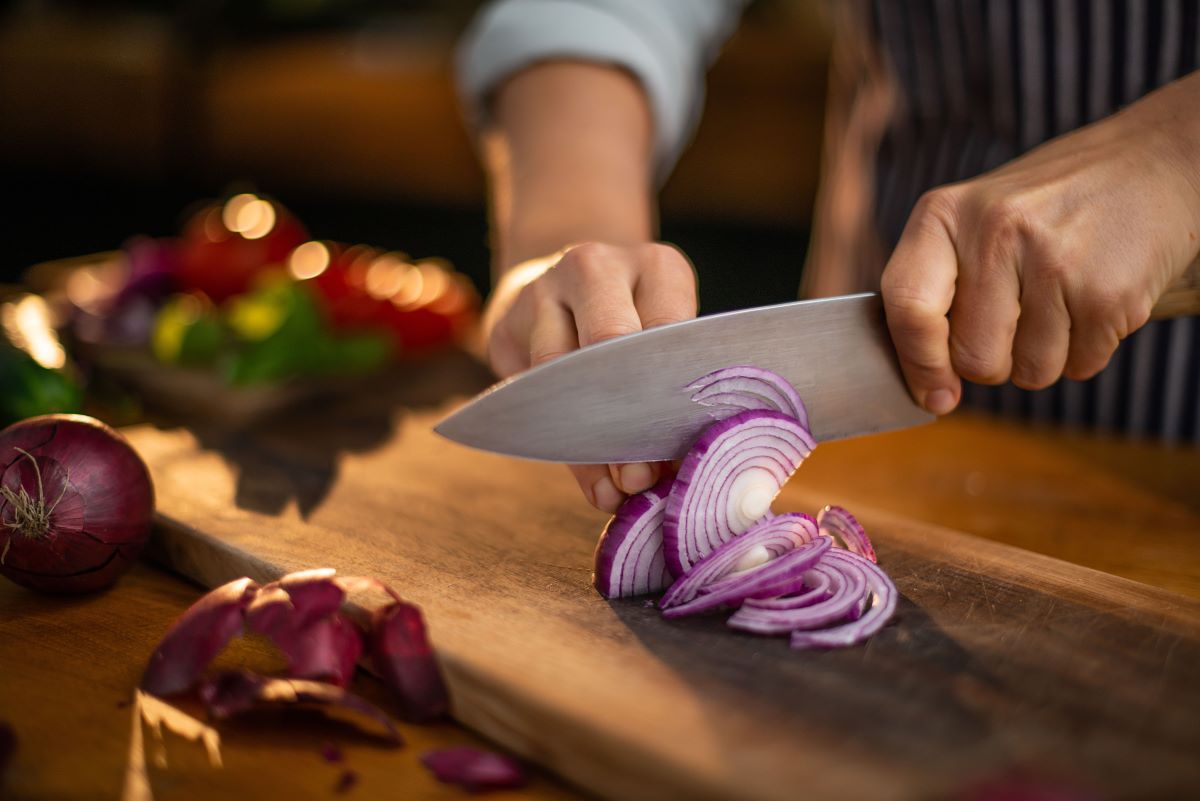
A kitchen knife is an essential tool in any cook's arsenal, but it can also be one of the most dangerous if you don’t know how to properly handle a kitchen knife. Whether you're a novice cook or a seasoned chef, it's important to be aware of the most common mistakes people make when using a kitchen knife. By avoiding these errors, you can enhance your safety in the kitchen and improve your overall culinary experience. In this blog post, we will discuss the top three biggest mistakes people make when using a kitchen knife and provide tips on how to avoid them.
- Improper Grip
One of the most critical aspects of safe knife handling is maintaining a proper grip. Unfortunately, many people overlook this fundamental aspect, leading to accidents and injuries. Holding a knife with an incorrect grip increases the risk of the knife slipping from your hand, resulting in cuts and other mishaps.
The correct grip involves wrapping your fingers around the handle, creating a secure and stable hold. Your thumb should rest on the side of the blade for added control. This grip allows for better maneuverability and reduces the chances of accidents. It's crucial to avoid extending your fingers along the handle as this compromises your grip and control over the knife.
Additionally, it's essential to choose a knife that feels comfortable in your hand. Everyone's hand size and shape are different, so find a knife with a handle that suits your grip. Ergonomically designed handles can provide a more secure and comfortable grip, reducing strain and fatigue during extended periods of use.
- Dull or Improperly Maintained Blades
Using a dull or improperly maintained knife is not only frustrating but also dangerous. A dull blade requires more force to cut, increasing the likelihood of the knife slipping and potentially causing severe injuries. It's important to keep your kitchen knives properly sharpened to ensure their effectiveness and safety.
Regularly sharpening your knives helps maintain their sharpness and cutting precision. There are various methods for sharpening knives, such as using a whetstone, honing steel, or electric sharpener. If you're unsure about sharpening techniques, consider seeking guidance from professionals or utilizing knife sharpening services.
In addition to sharpness, the overall condition of the knife is vital for safe use. Check for loose handles, rust spots, or any other damage that may compromise the knife's integrity. A loose handle can result in an unstable grip, while rusted areas may contaminate the food and pose health risks. It's important to regularly inspect your knives and replace any damaged or compromised ones promptly.
Proper knife maintenance includes cleaning and drying the blades thoroughly after each use. Avoid soaking your knives for extended periods as this can lead to corrosion. Store knives in a designated knife block or on a magnetic strip to prevent them from knocking against other utensils, which could dull the blade or cause accidental injuries.
- Incorrect Cutting Technique
Using the wrong cutting technique is another common mistake that can lead to accidents in the kitchen. It's essential to learn and employ proper cutting techniques to ensure your safety and efficiency while using a kitchen knife.
One prevalent error is cutting towards oneself instead of away from the body. This can result in the knife slipping and causing severe injuries. Always cut away from your body, keeping the blade and your fingers in a safe position. Ensure that your non-dominant hand holds the ingredient with the "claw grip" technique, curling your fingers inwards and tucking them away from the blade. This technique minimizes the risk of cutting yourself while providing better control over the ingredient being chopped.
Using excessive force while cutting is another mistake to avoid. A sharp knife requires minimal pressure to cut through ingredients. Excessive force not only increases the chances of losing control but also strains your hand and arm muscles. Let the knife do the work, and focus on maintaining a steady and controlled motion.
By avoiding these three common mistakes, you can significantly improve your safety and efficiency when using a kitchen knife. Remember to maintain a proper grip, regularly sharpen and maintain your blades, and use correct cutting techniques. Ultimately, prioritizing safety in the kitchen will allow you to enjoy cooking with confidence and reduce the risk of accidents. Stay mindful, practice good knife skills, and enhance your culinary experience. Happy and safe cooking!
